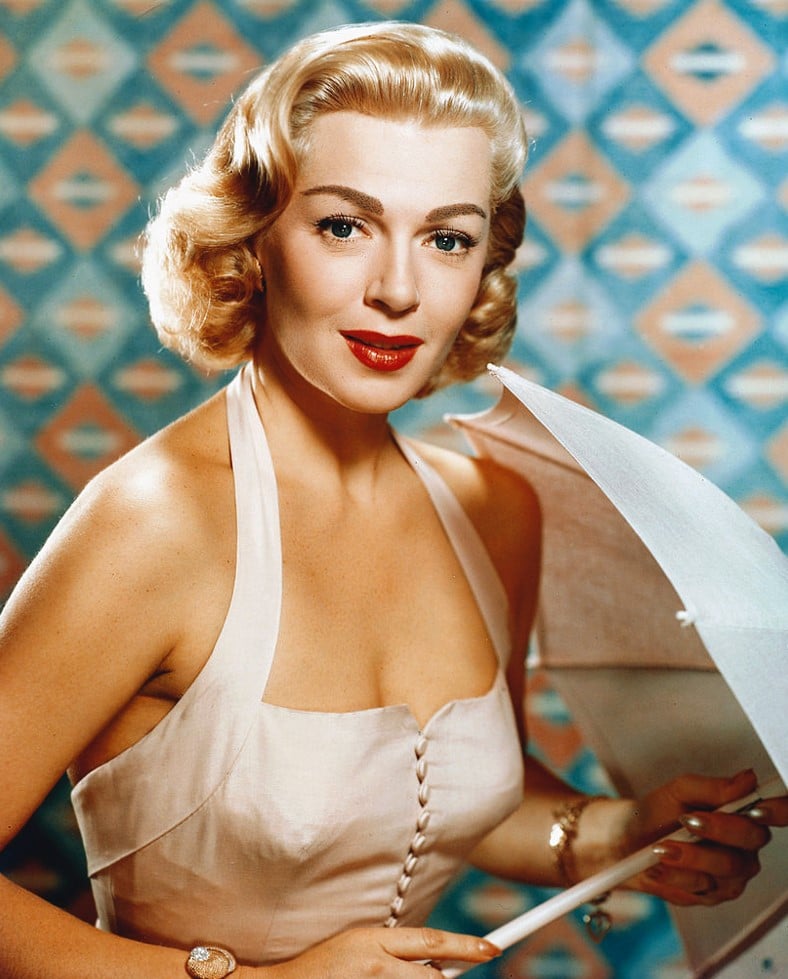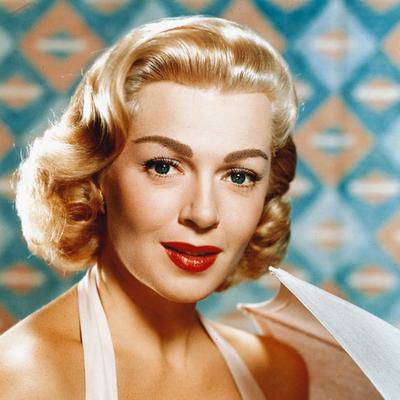Lana Turner at a Glance
- Categories: Celebrities > Actors, Celebrities
- Net Worth: $5 Million
- Birthdate: Feb 8, 1921 - Jun 29, 1995 (74 years old)
- Birthplace: Wallace
- Gender: Female
- Profession: Actor
- Nationality: United States of America
- Height: 5 ft 2 in (1.6 m)
Lana Turner’s Net Worth: A Look at the Life and Legacy of a Hollywood Icon
Lana Turner, a name synonymous with Hollywood glamour and the Golden Age of cinema, captivated audiences with her beauty, talent, and charisma. But what was Lana Turner’s net worth, and how did her life unfold beyond the silver screen? This article delves into the life and career of this iconic actress, exploring her financial standing, early life, rise to fame, relationships, and lasting legacy.
Early Life and Humble Beginnings
Lana Turner, born Julia Jean Turner on February 8, 1921, in Wallace, Idaho, began life far from the glitz and glamour she would later embody. Her parents, John and Mildred Turner, came from working-class backgrounds, providing her with a sense of the challenges and realities of everyday life. Her ancestry was a blend of Dutch, Scottish, English, and Irish heritage, reflecting the diverse cultural tapestry of America.
Tragedy struck early in her life. When Turner was six years old, her family moved to San Francisco, California. Shortly after, her parents separated. In 1930, her father was tragically murdered during a robbery after winning money in a craps game. This left Turner and her mother in a precarious financial situation. The young Turner spent time in Modesto with a less than ideal family situation while her mother worked tirelessly as a beautician, often putting in 80-hour weeks, to provide for her daughter. These early experiences shaped Turner’s character, instilling in her a resilience and determination that would prove invaluable in her future endeavors.
From Soda Fountain to Stardom: The Discovery of Lana Turner
The turning point in Lana Turner’s life occurred in 1936 when she moved to Los Angeles with her mother. While attending Hollywood High School, she made a fateful decision that would alter the course of her life forever. Skipping class one day, she visited the Top Hat Malt Shop, a popular hangout, where she was spotted by William R. Wilkerson, the publisher of the Hollywood Reporter. Captivated by her striking beauty, Wilkerson inquired if she had any interest in acting in films.
With her mother’s blessing, Turner embraced the opportunity. She was referred to actor and talent agent Zeppo Marx, who then introduced her to director Mervyn LeRoy. Impressed by her potential, LeRoy signed Turner to Warner Bros., essentially making her his protégé. This marked the beginning of Turner’s journey to Hollywood stardom, a story that began with a casual encounter and a willingness to seize a life-changing opportunity.
Golden Age Glamour: Lana Turner’s Rise to Hollywood Fame (Part 1)
Lana Turner’s film career commenced in 1937 with a small but notable role in Mervyn LeRoy’s crime drama, “They Won’t Forget.” That same year, she appeared in “Topper” and “The Great Garrick,” further honing her skills and building her profile in the industry. Turner’s association with LeRoy led her to move from Warner Bros. to MGM, where LeRoy had been hired. Her first starring role for MGM came in 1938 in the commercially successful “Love Finds Andy Hardy.”
This success was quickly followed by roles in films such as “The Chaser,” “Rich Man, Poor Girl,” “Dramatic School,” “Calling Dr. Kildare,” “These Glamour Girls,” and “Dancing Co-Ed,” the latter of which was a significant commercial success. These films showcased Turner’s versatility and her ability to captivate audiences. In 1940, she starred in “We Who Are Young” and “Two Girls on Broadway,” her first foray into musicals. In 1941, she starred in “Ziegfeld Girl,” a major hit that significantly increased her profitability. The film solidified her place as a leading lady. Subsequent films included “Dr. Jekyll and Mr. Hyde,” “Honky Tonk,” “Johnny Eager,” “Somewhere I’ll Find You,” “Slightly Dangerous,” “Marriage is a Private Affair,” and “Week-End at the Waldorf,” demonstrating her ability to handle a diverse range of genres.
Navigating the Silver Screen: Turner’s Continued Success and Evolution (Part 2)
Following the Second World War, Turner took on one of her most iconic roles in the film noir classic “The Postman Always Rings Twice,” adapted from James M. Cain’s novel. Her portrayal of the femme fatale, Cora Smith, earned her critical acclaim and solidified her status as a top dramatic actress. Turner’s talent continued to shine in the historical disaster drama “Green Dolphin Street,” the romantic dramas “Cass Timberlane” and “Homecoming,” the adventure film “The Three Musketeers,” the melodrama “A Life of Her Own,” and the romantic musical “Mr. Imperium.” She continued her musical endeavors with 1952’s “The Merry Widow” and earned strong reviews for her performance in Vincente Minnelli’s hit melodrama “The Bad and the Beautiful.” Her filmography continued with Mervyn LeRoy’s romantic musical comedy “Latin Lovers.”
In 1953, Turner ventured to Europe to make a pair of films under a tax credit for internationally shot American productions, “Flame and the Flesh” and “Betrayed.” Subsequently, she starred in the biblical epic “The Prodigal” and the World War II drama “The Sea Chase.” In 1955, she was loaned to 20th Century Fox for “The Rains of Ranchipur,” a remake of the 1939 film “The Rains Came.” Returning to MGM, Turner starred as the title character in the 1956 historical drama “Diane.” The following year, she received her first and only Academy Award nomination for Best Actress for her role in the drama “Peyton Place.” After “The Lady Takes a Flyer” and “Another Time, Another Place,” Turner achieved her biggest commercial success with Douglas Sirk’s 1959 melodrama “Imitation of Life,” which grossed over $50 million. This demonstrated her enduring appeal and ability to connect with audiences.

Keystone/Getty Images
Venturing Beyond Film: Lana Turner on Television and Stage
Turner’s career extended beyond the silver screen, including notable work in television and on the stage. In the late 1960s and early 1970s, she had a role in the primetime soap opera “Harold Robbins’ The Survivors.” Around this time, she began performing on stage, starting with a production of “Forty Carats.” She also appeared in productions of “Bell, Book and Candle,” “Divorce Me, Darling,” and “Murder Among Friends.”
After a hiatus from television, Turner returned in 1982, playing the character of Jacqueline Perrault in six episodes of the primetime soap opera “Falcon Crest.” This demonstrated her versatility and ability to adapt to the changing landscape of the entertainment industry. Her final television appearance came in 1985 on “The Love Boat,” adding another dimension to her already multifaceted career.

Getty
Love, Loss, and Scandal: The Turbulent Personal Life of Lana Turner
Lana Turner’s personal life was marked by a series of high-profile relationships, eight marriages in total, and several well-publicized affairs. In 1940, she married bandleader Artie Shaw, but the marriage was short-lived, lasting only four months, and resulted in a pregnancy and abortion. Her next marriage was to actor and restaurateur Joseph Stephen Crane in 1942. The marriage was annulled shortly after when Crane’s prior divorce was found not to be finalized, though Turner soon remarried him after becoming pregnant, and gave birth to a daughter, Cheryl. Turner and Crane divorced in 1944.
In 1948, she married millionaire Henry “Bob” Topping Jr., followed by actor Lex Barker in 1953, who later divorced in 1957. She married rancher Frederick May in late 1960, but they divorced in 1962. From 1965 to 1969, she was married to Hollywood producer Robert Eaton. Her final marriage was to fraudster Ronald Pellar, which lasted from 1969 to 1972.
Beyond her marriages, Turner had relationships with several famous men, including Tyrone Power, Frank Sinatra, and Howard Hughes. A particularly tragic chapter involved her relationship with mobster Johnny Stompanato, who stalked and physically assaulted her. In 1958, during a heated altercation, Turner’s daughter, Cheryl, intervened and fatally stabbed Stompanato with a kitchen knife. The case became a highly sensationalized media story, though Turner and her daughter were eventually acquitted.
A Life Remembered: The Final Years and Passing of Lana Turner
In 1992, after being a heavy smoker for many years, Lana Turner was diagnosed with throat cancer. She underwent surgery and radiation therapy, achieving remission in 1993. However, the cancer returned the following year. Turner’s battle with cancer ended in June 1995, when she passed away at the age of 74. Her death marked the end of an era, but her films, her image, and the memories she created continue to resonate with audiences worldwide. Lana Turner’s life was a testament to resilience, beauty, and the enduring allure of Hollywood.

